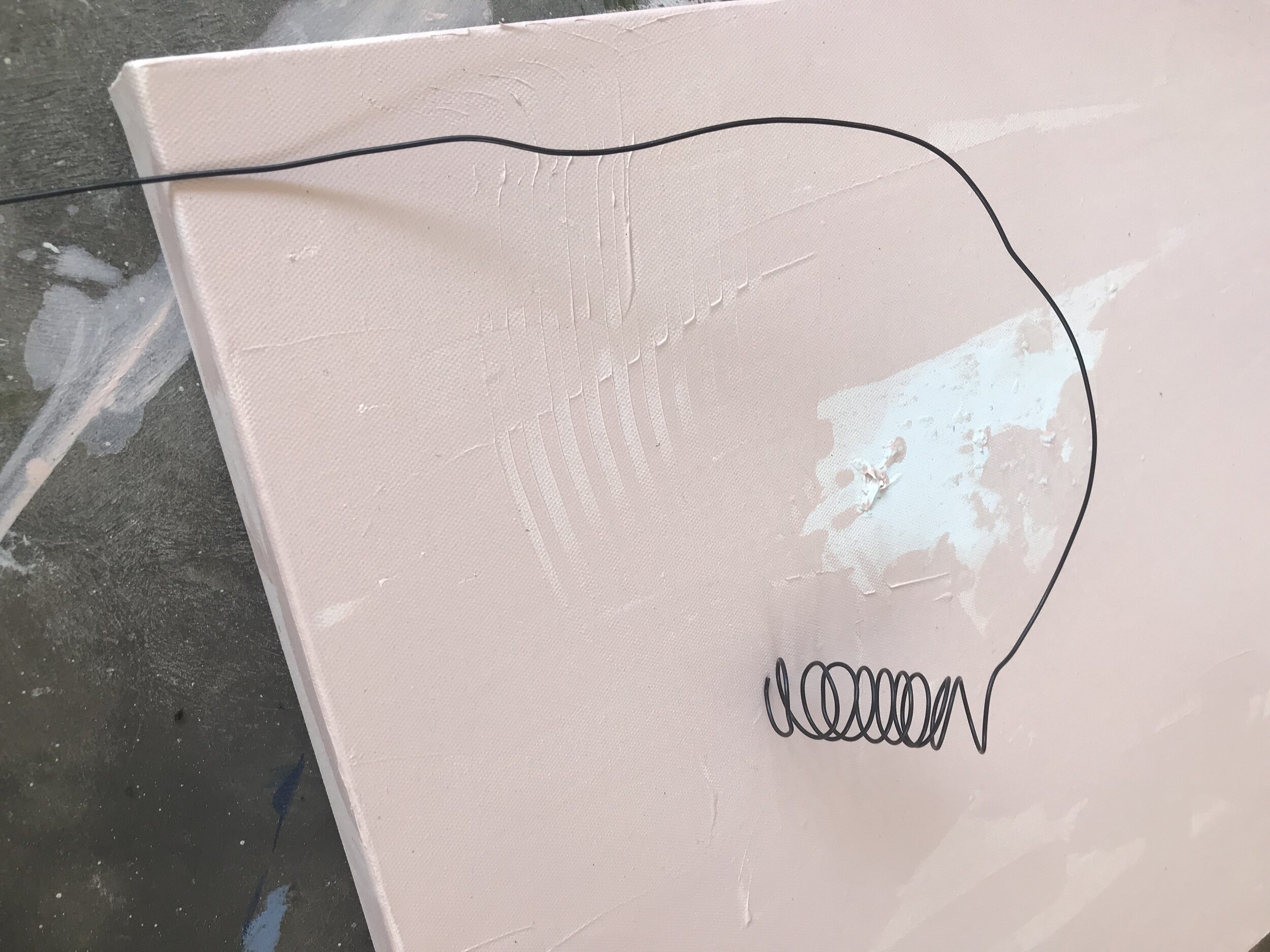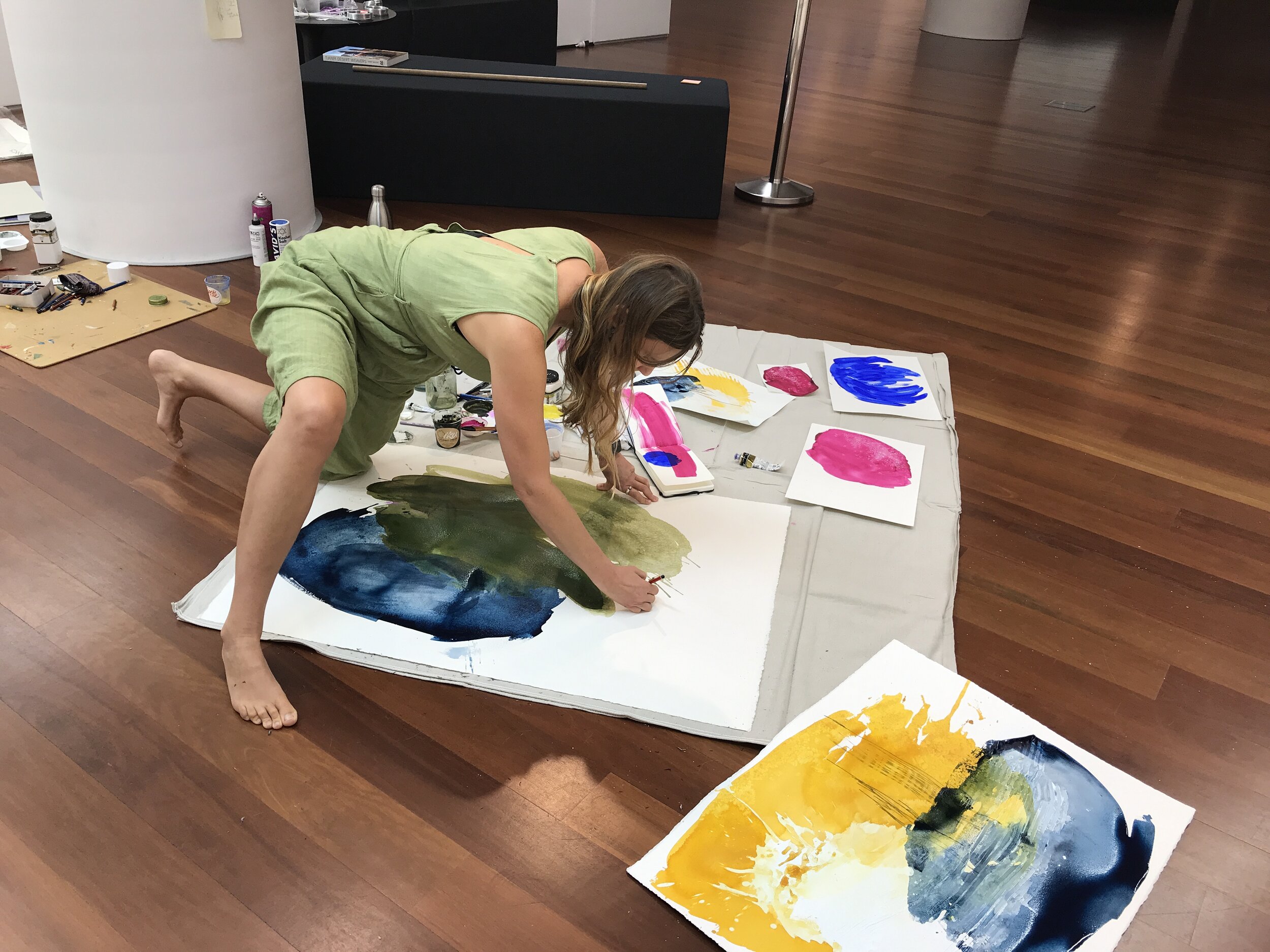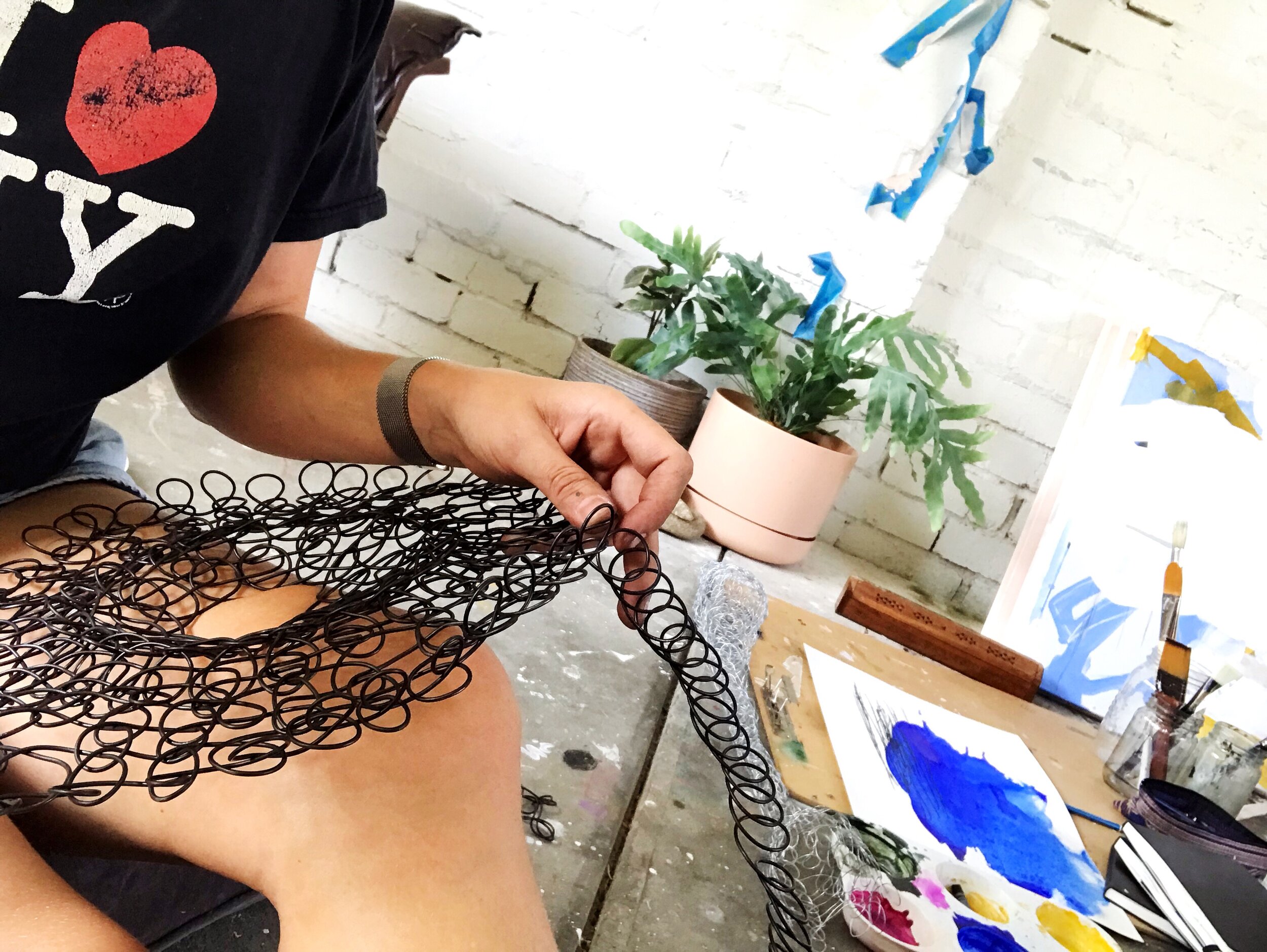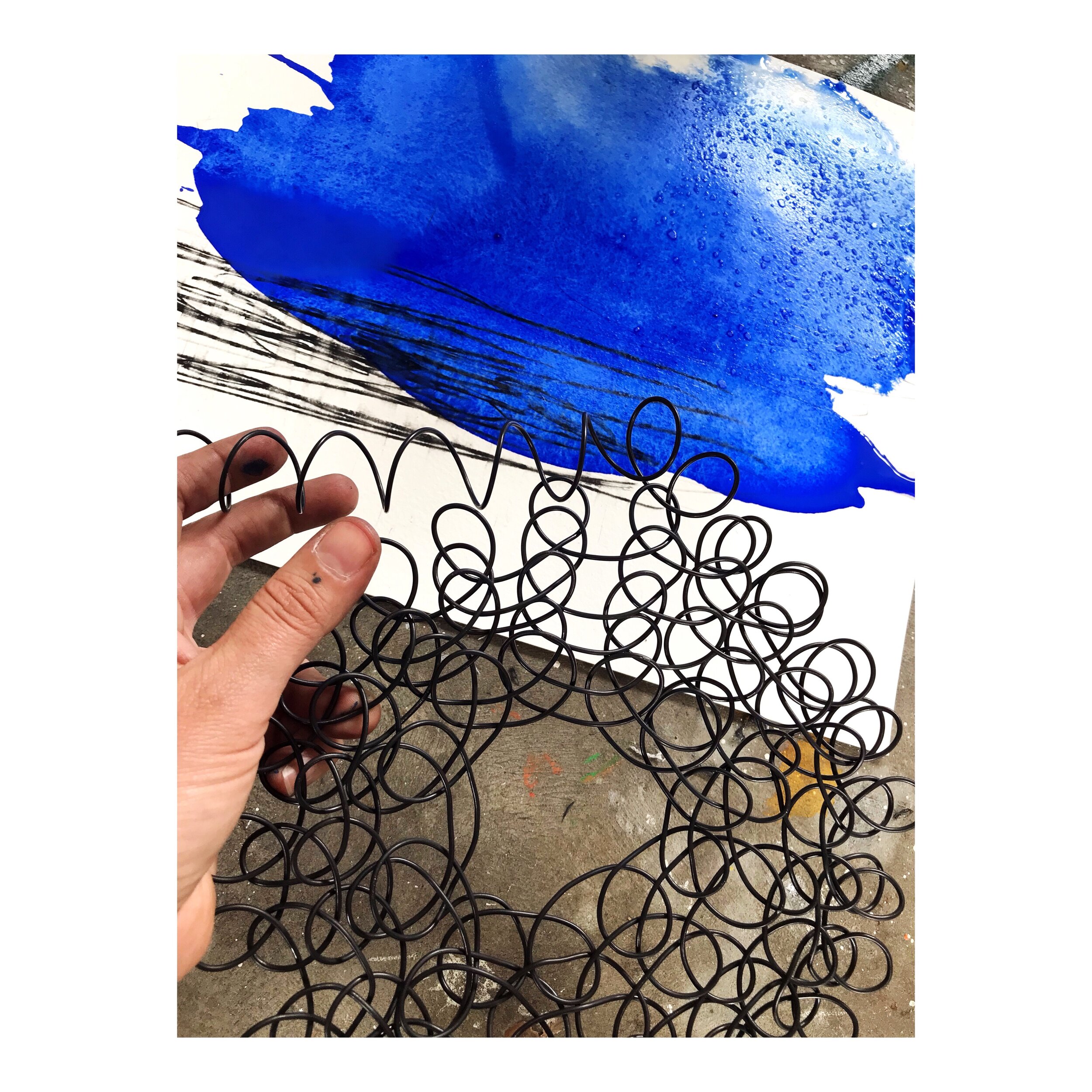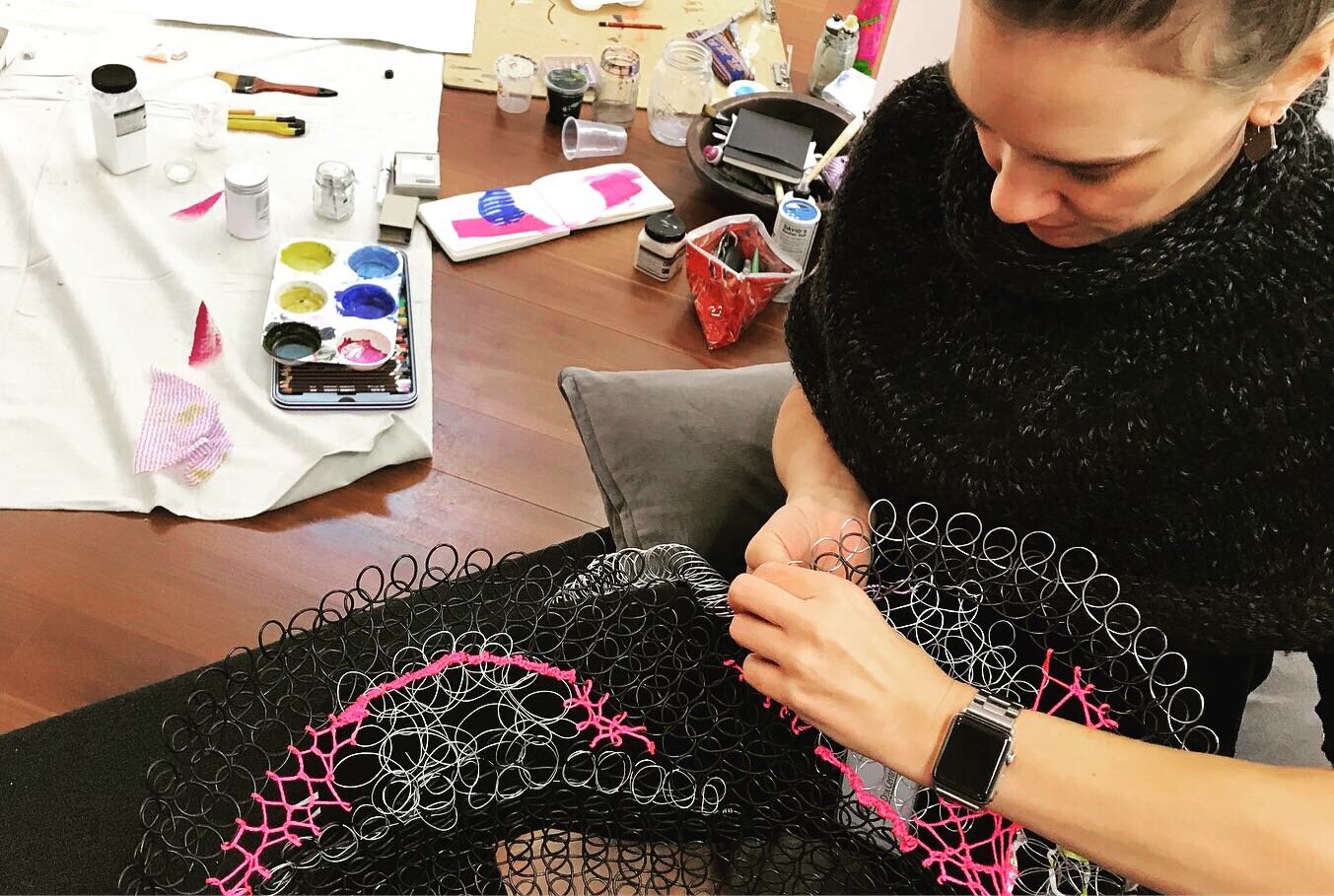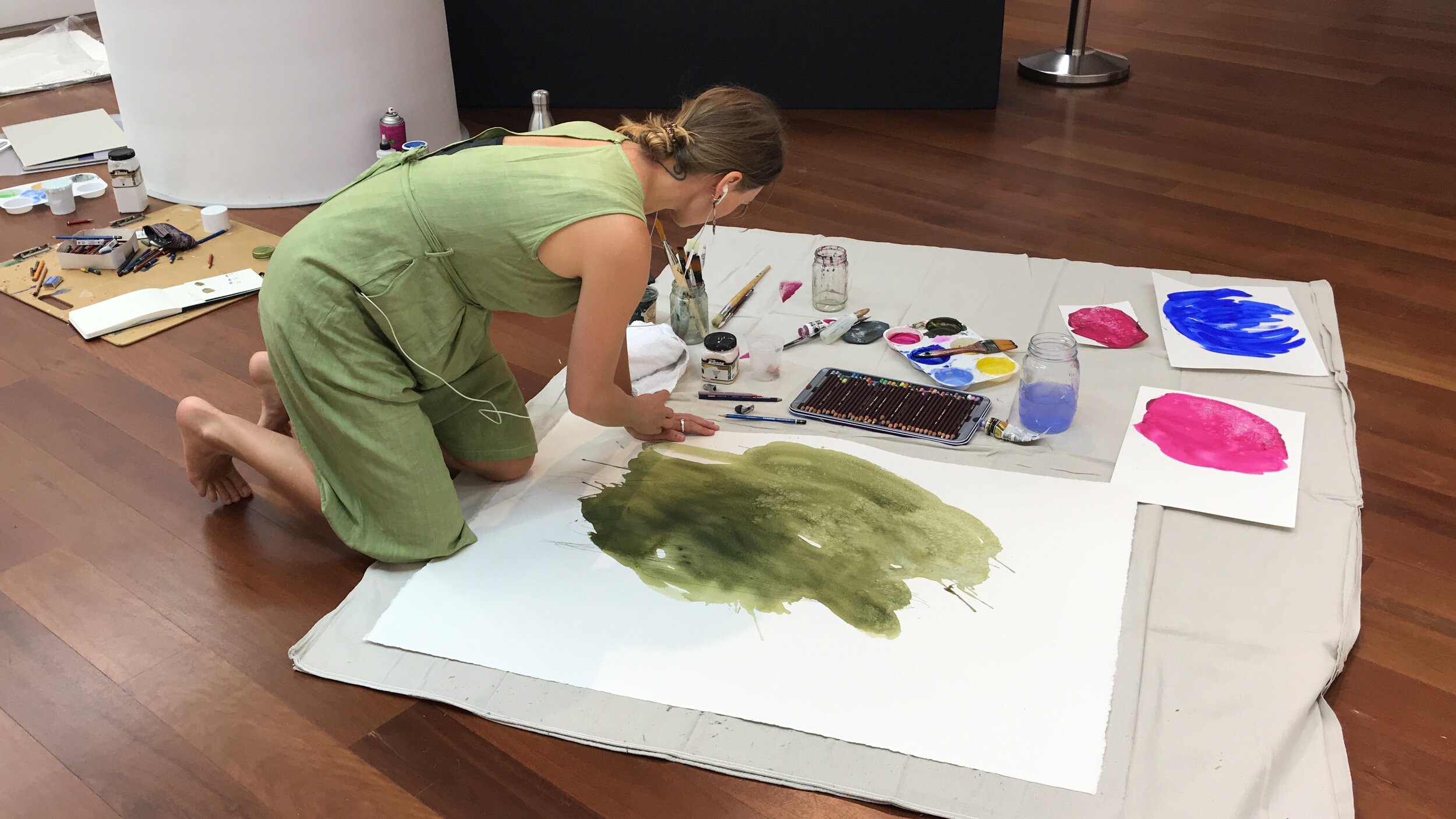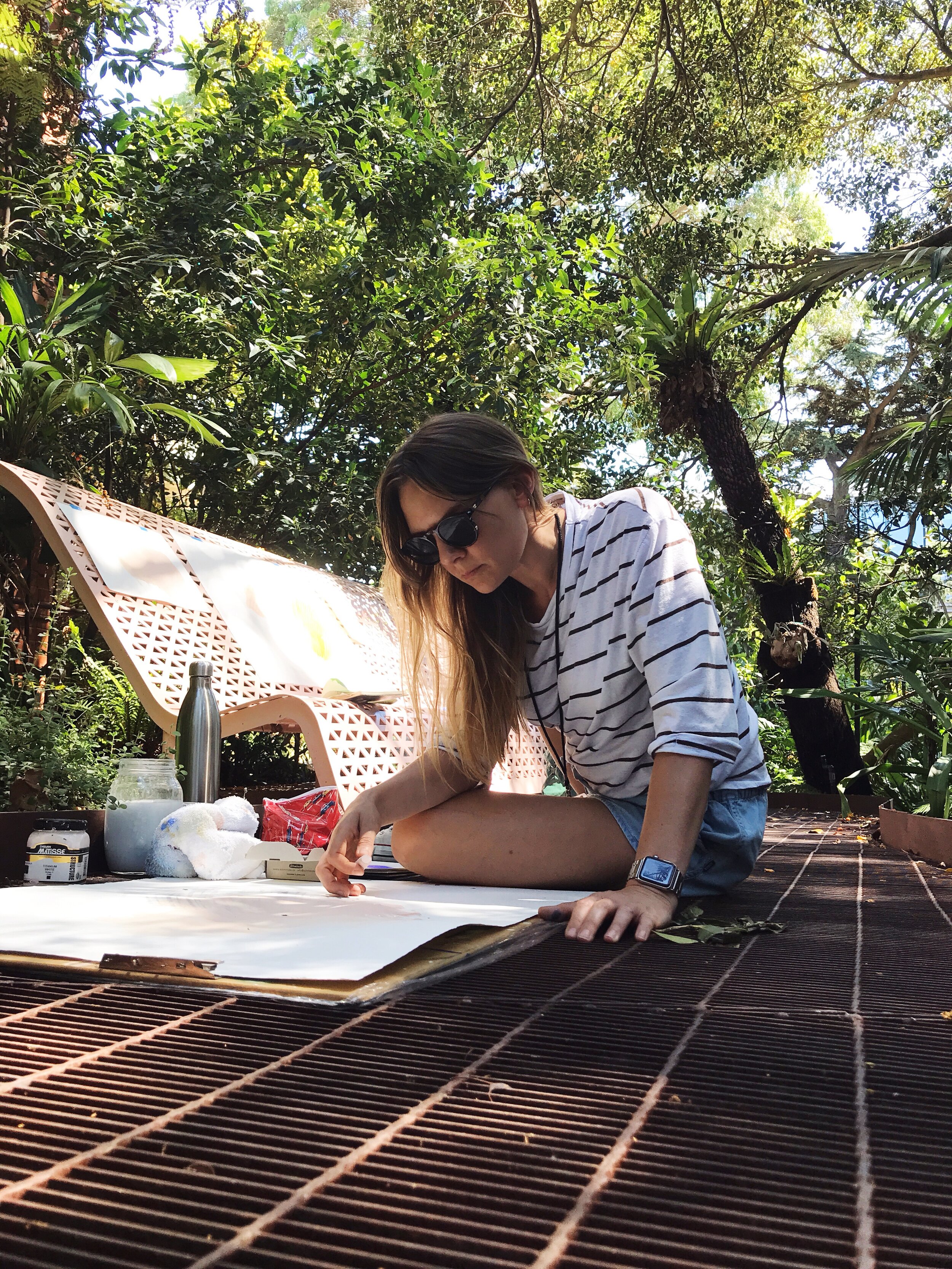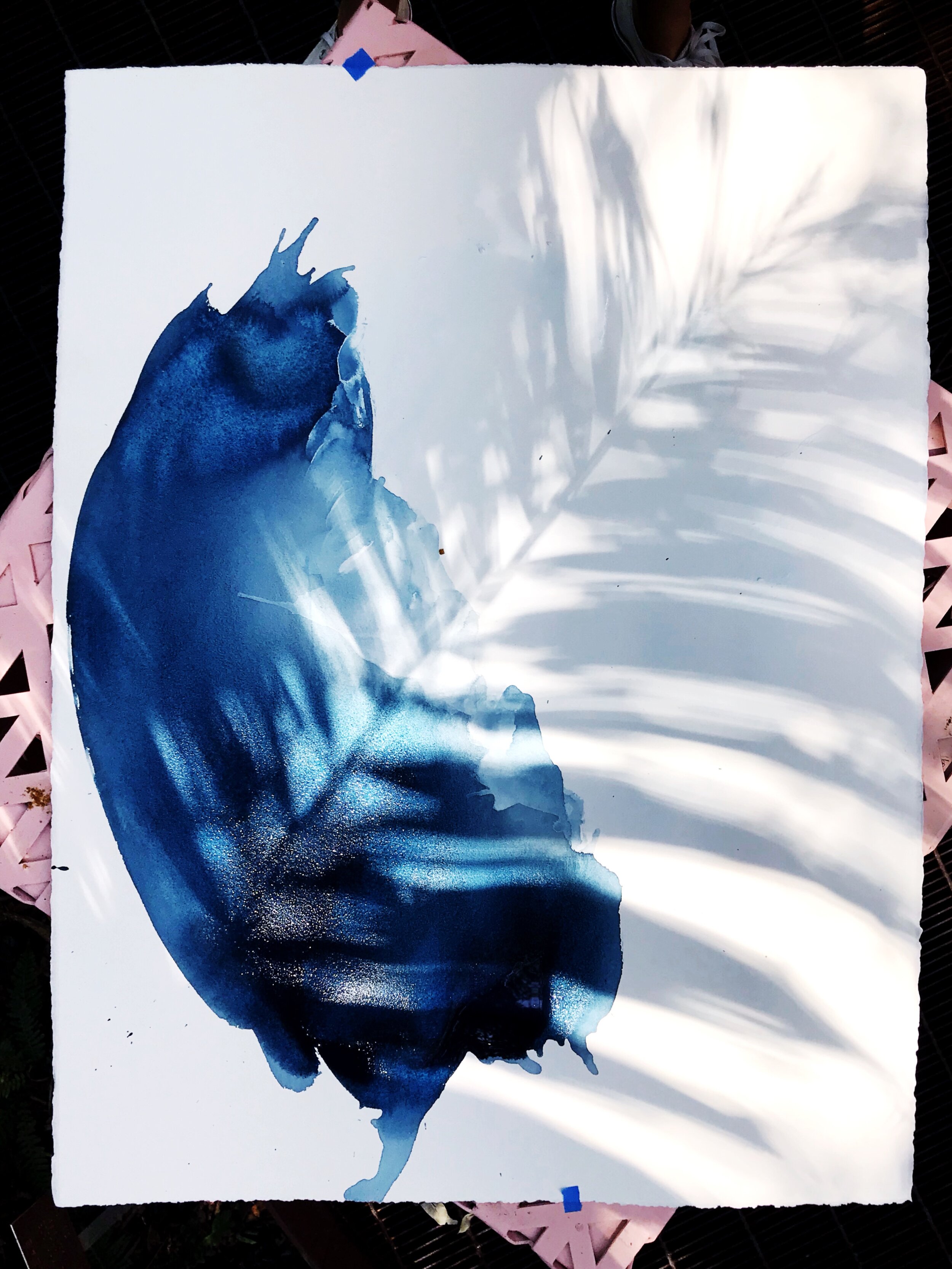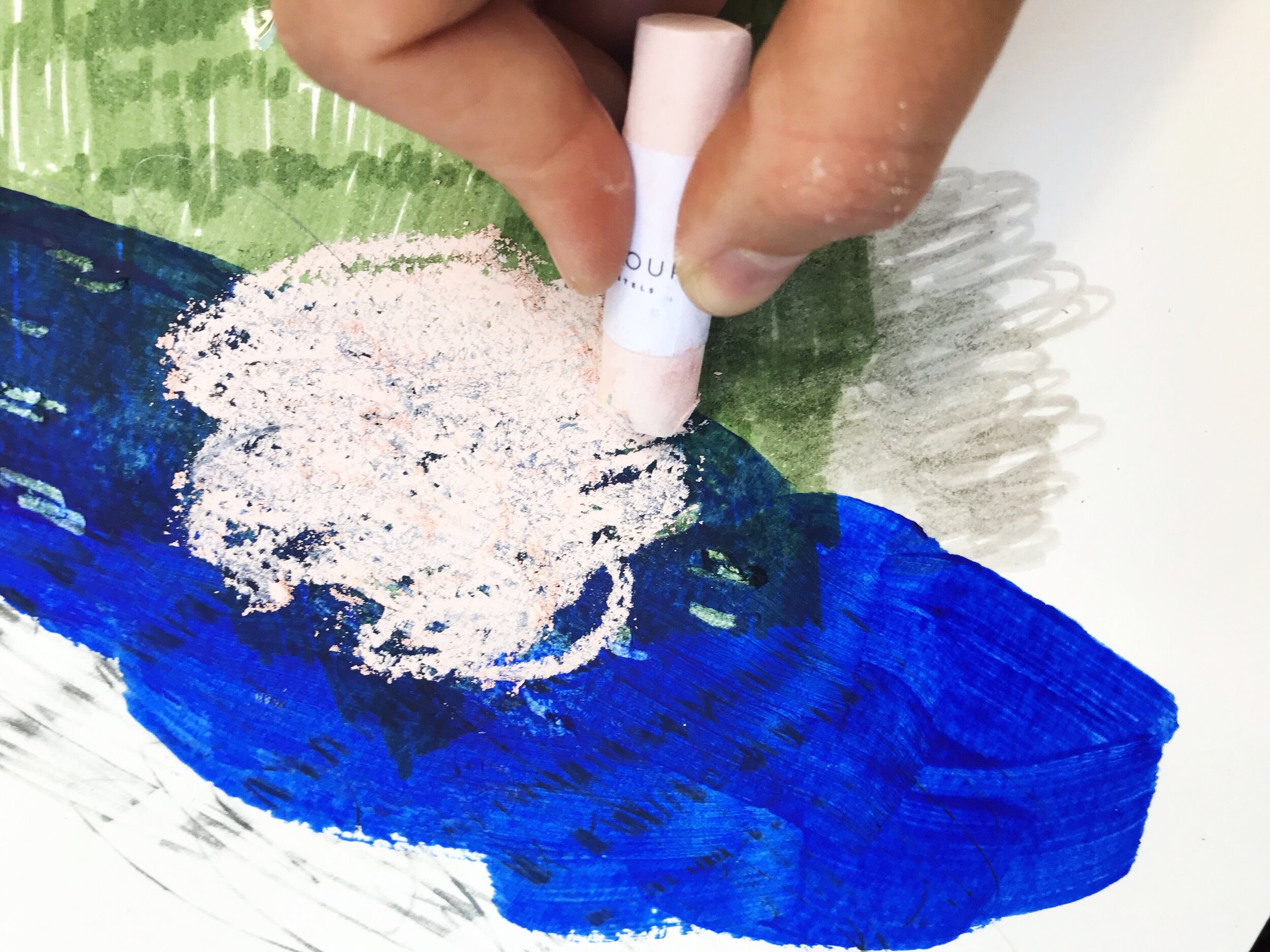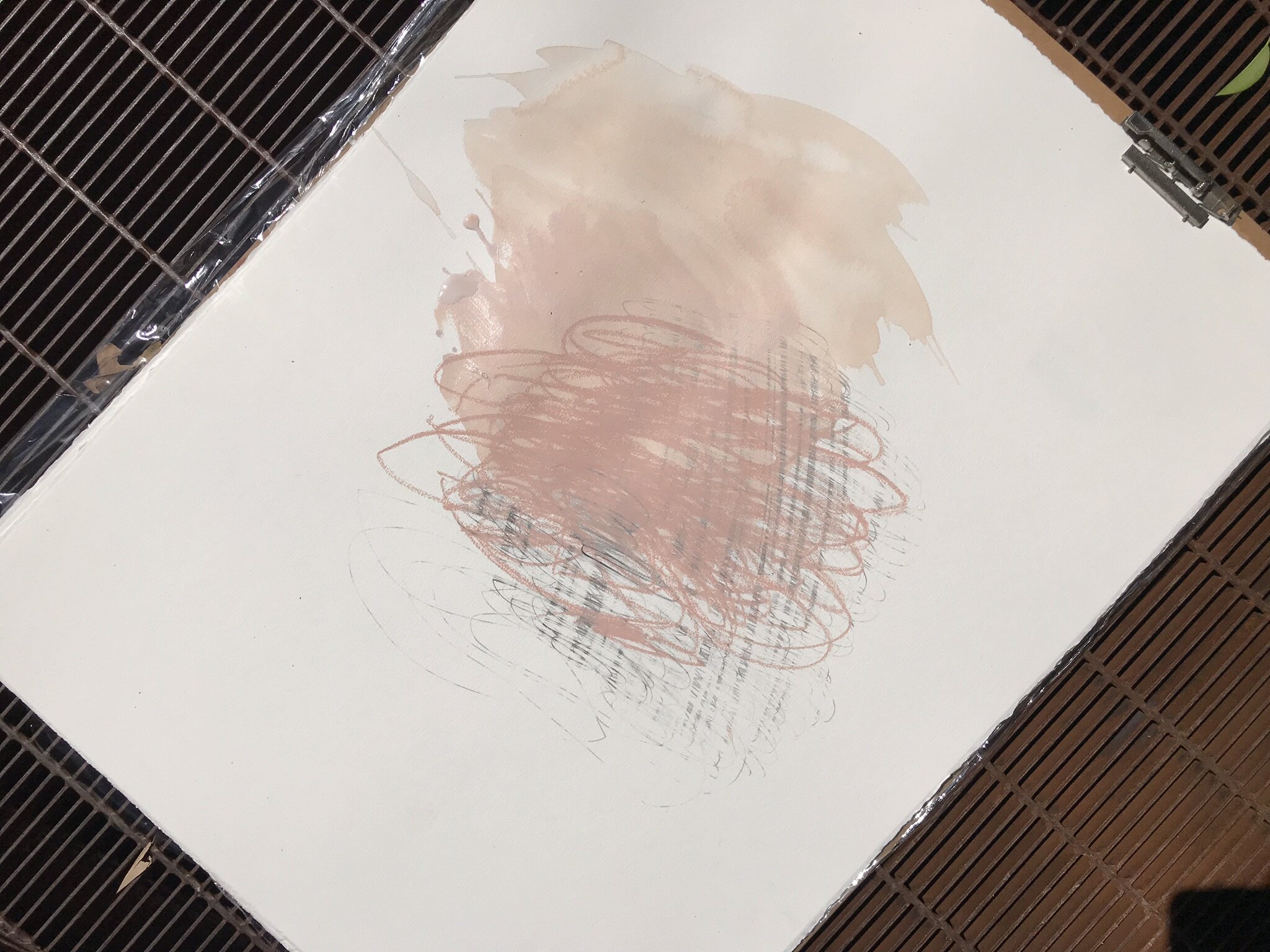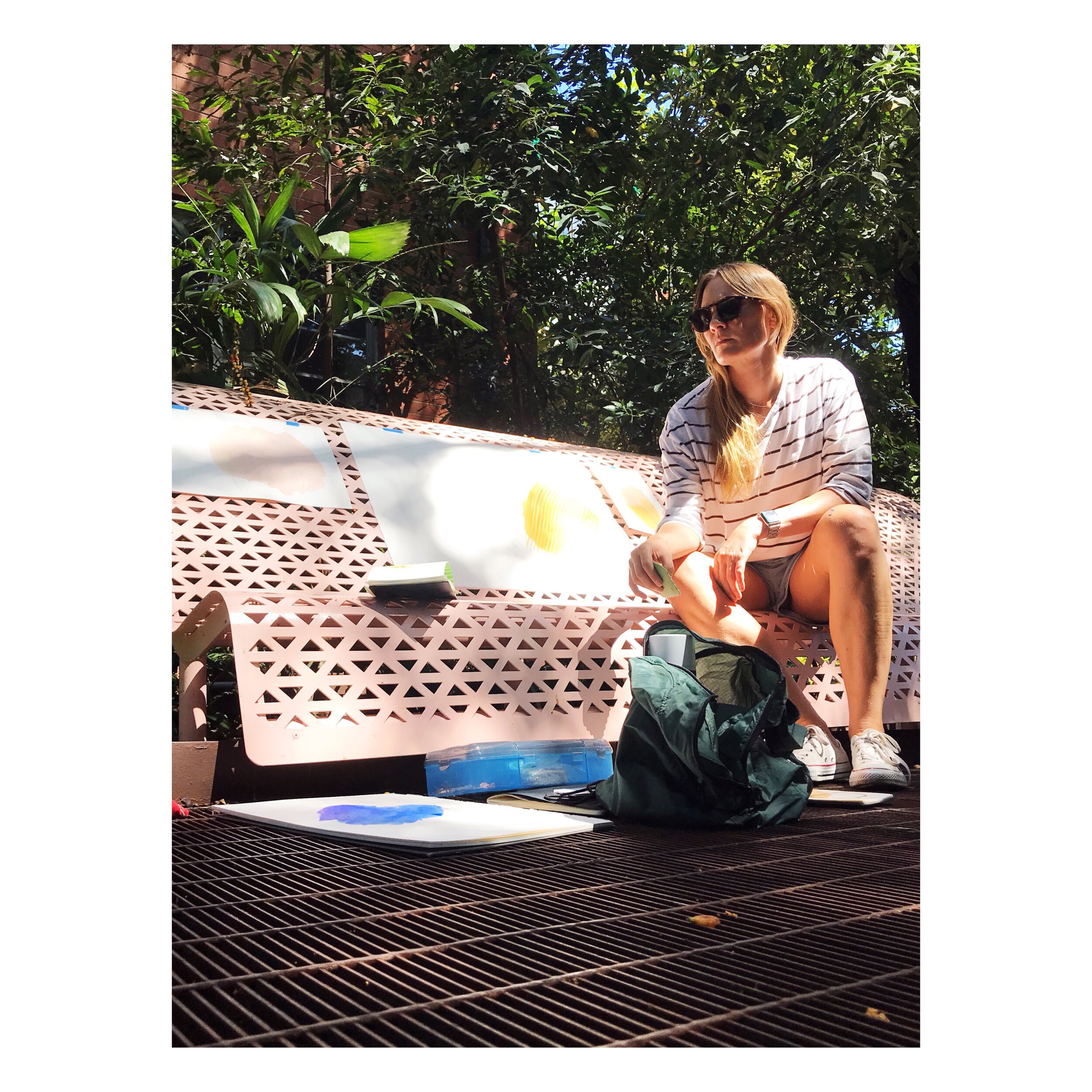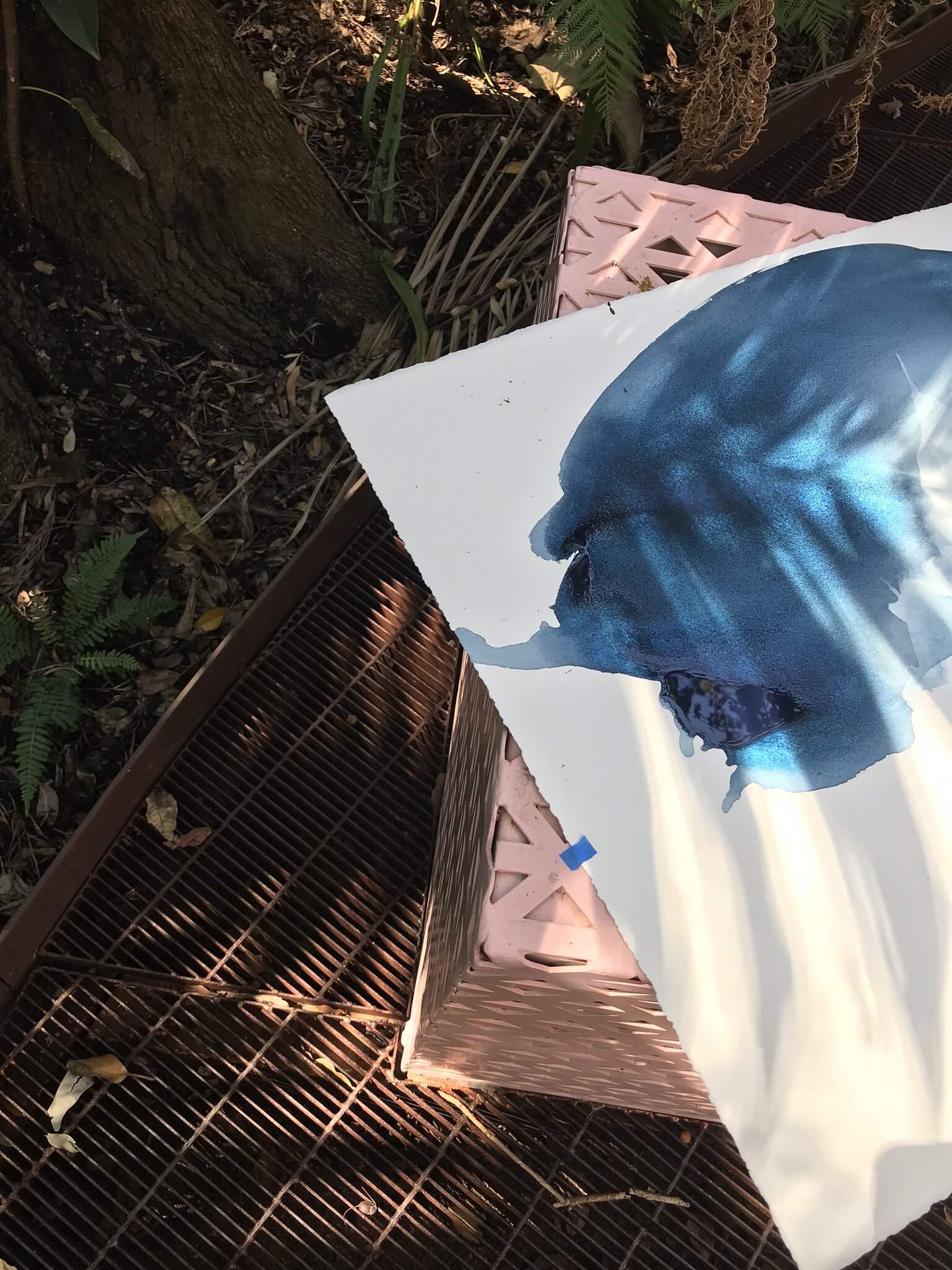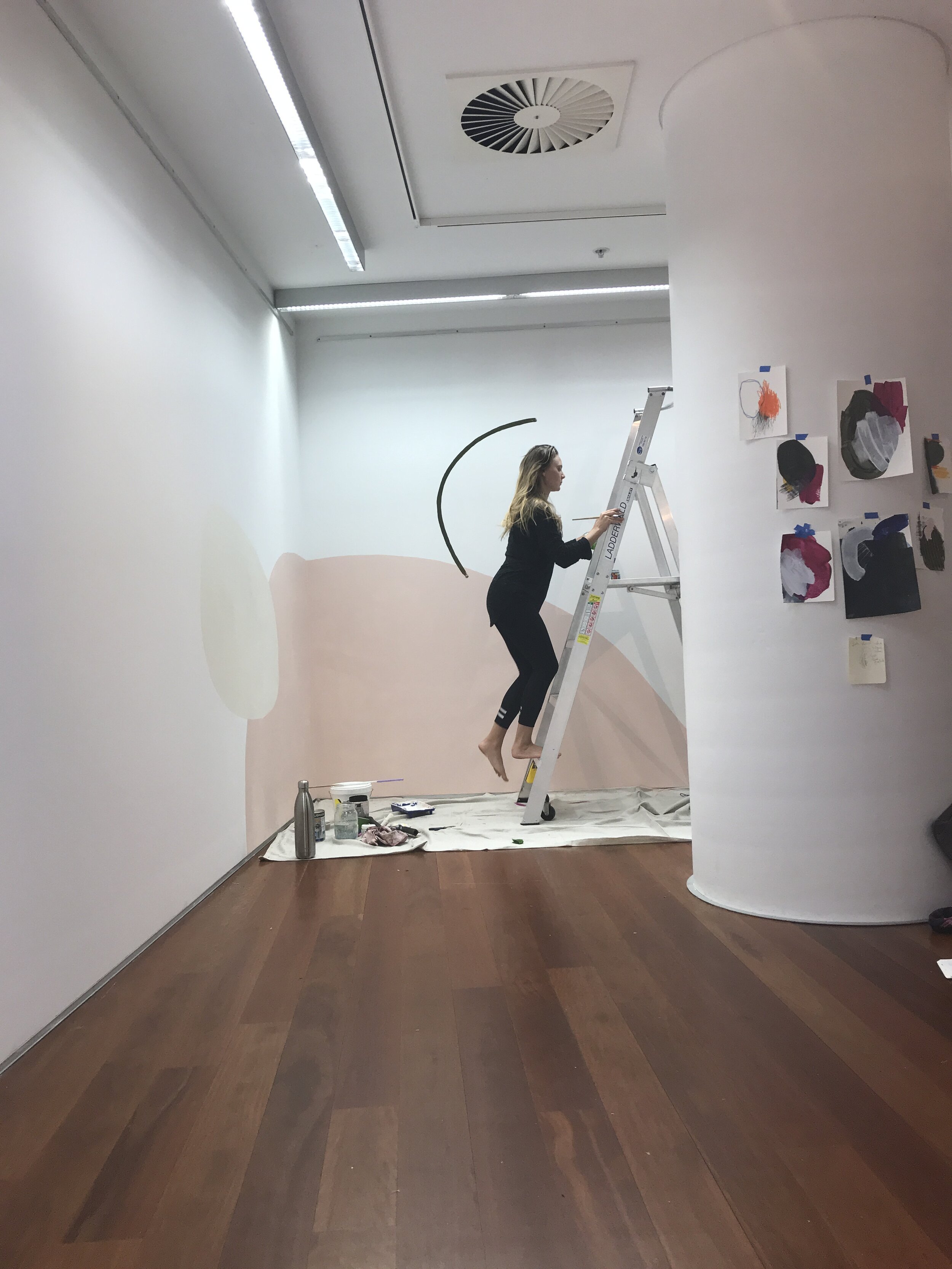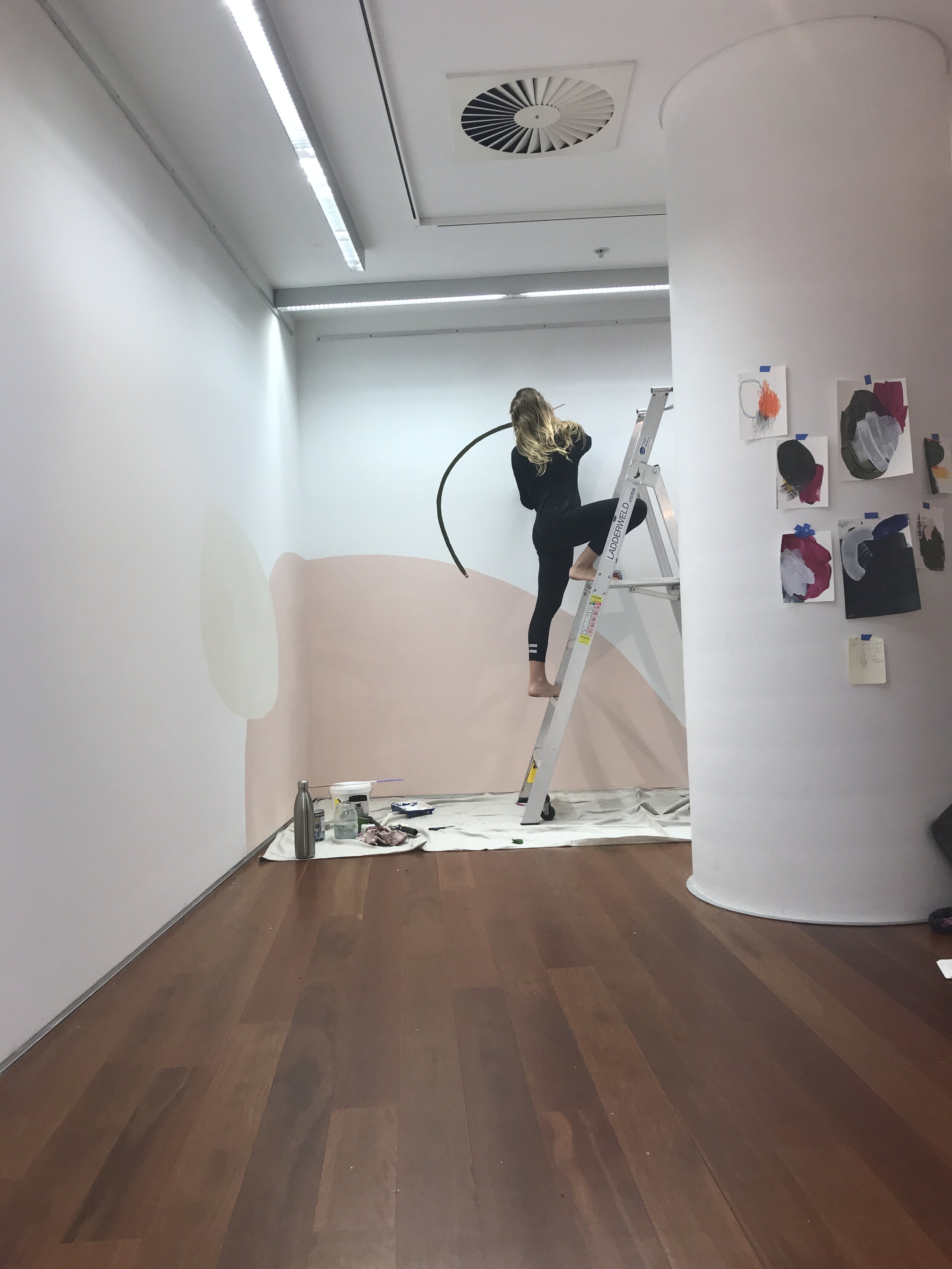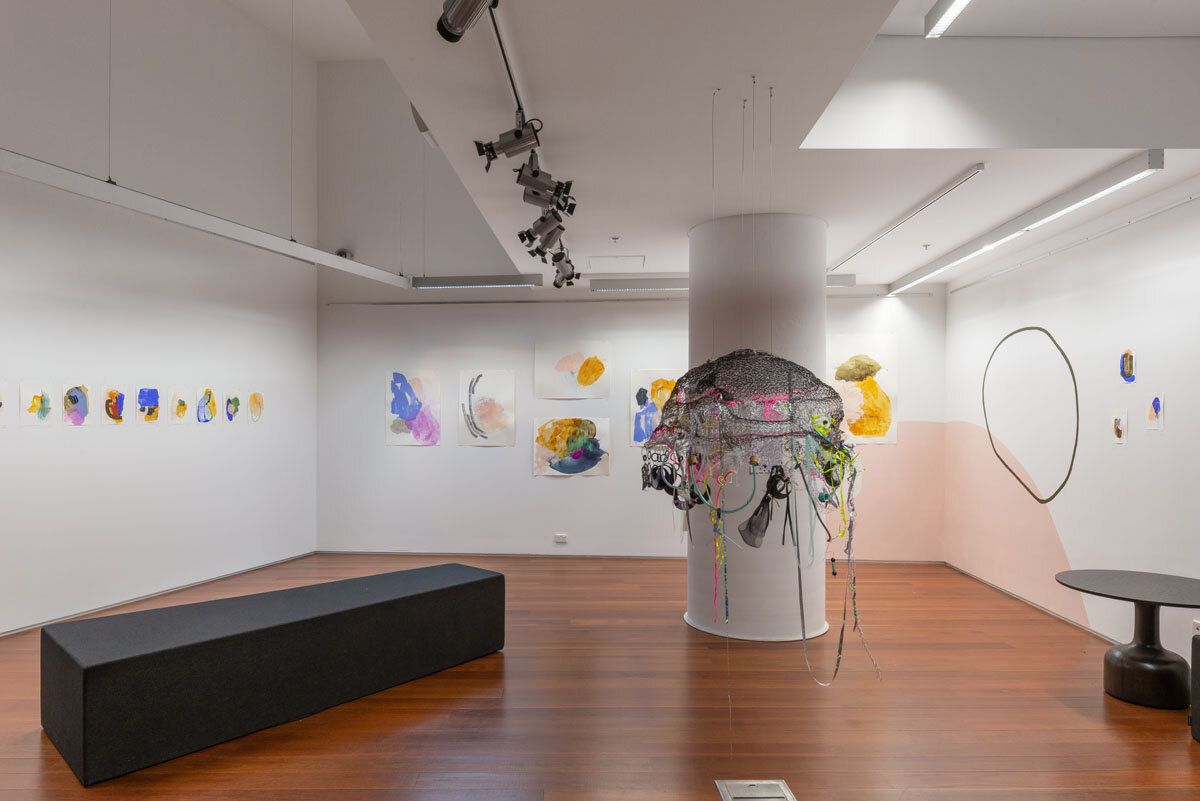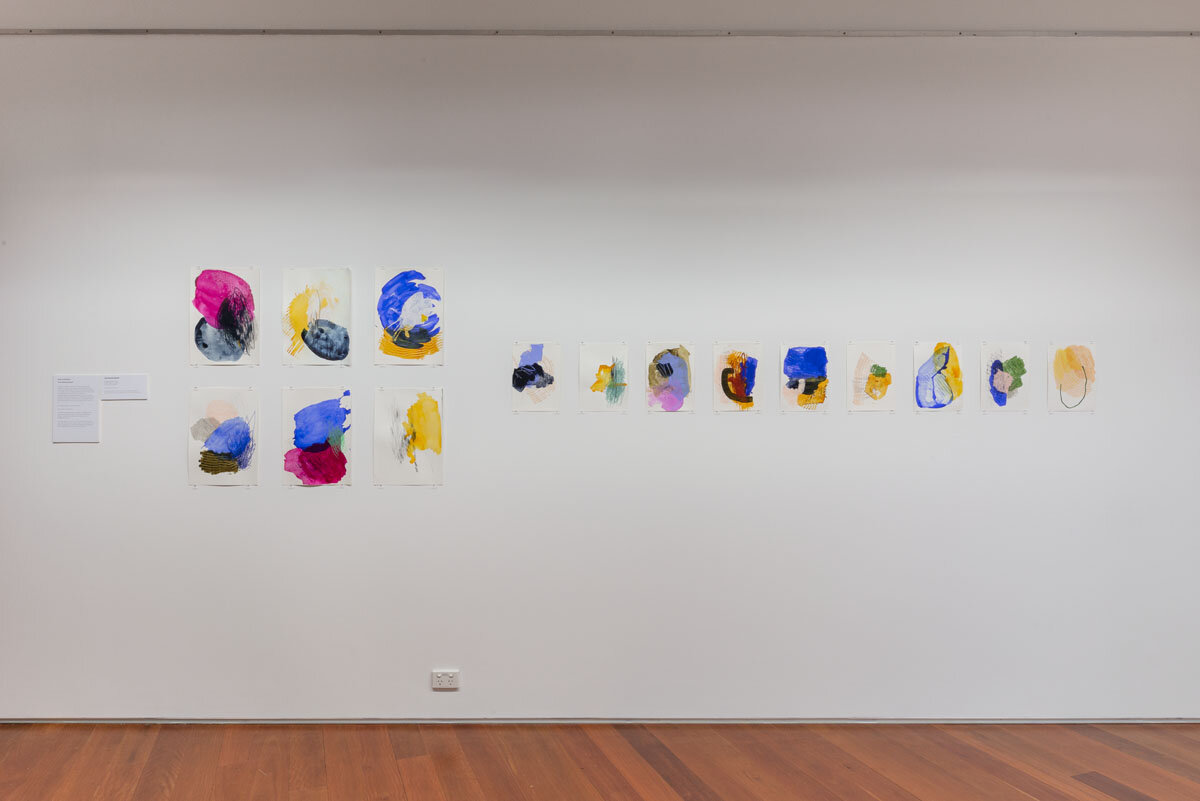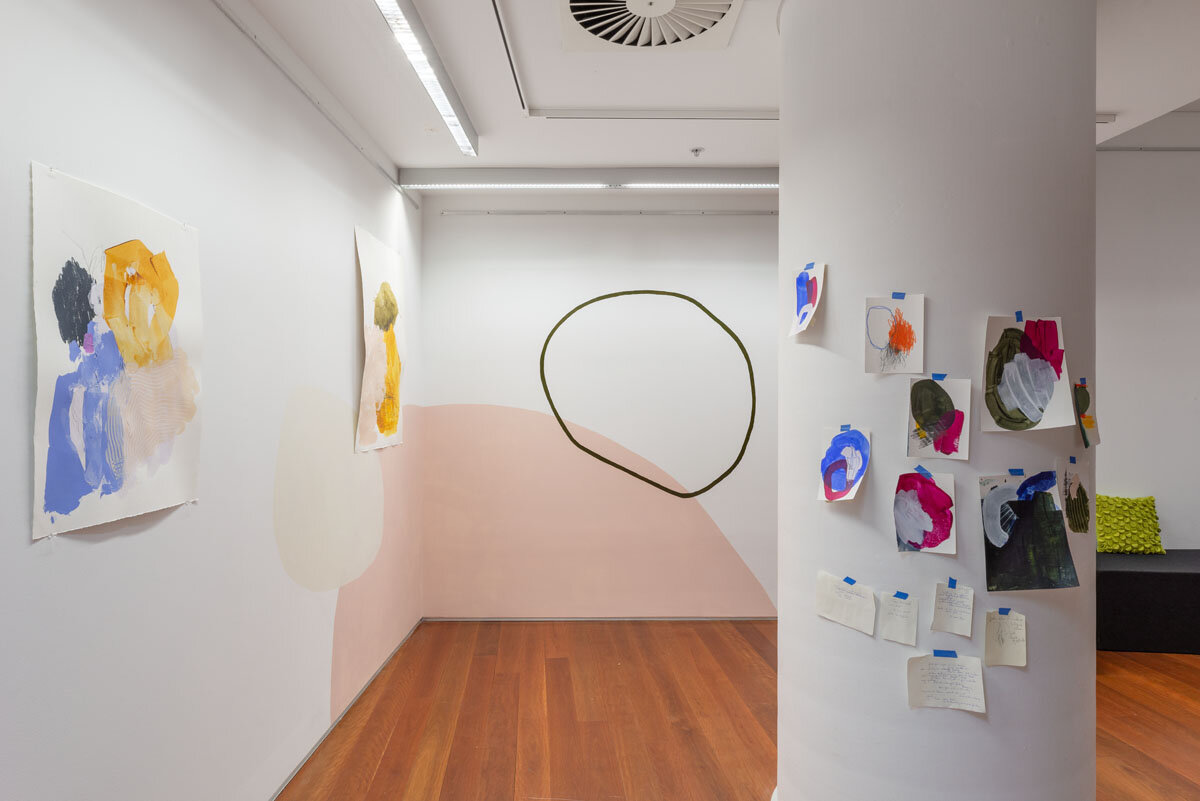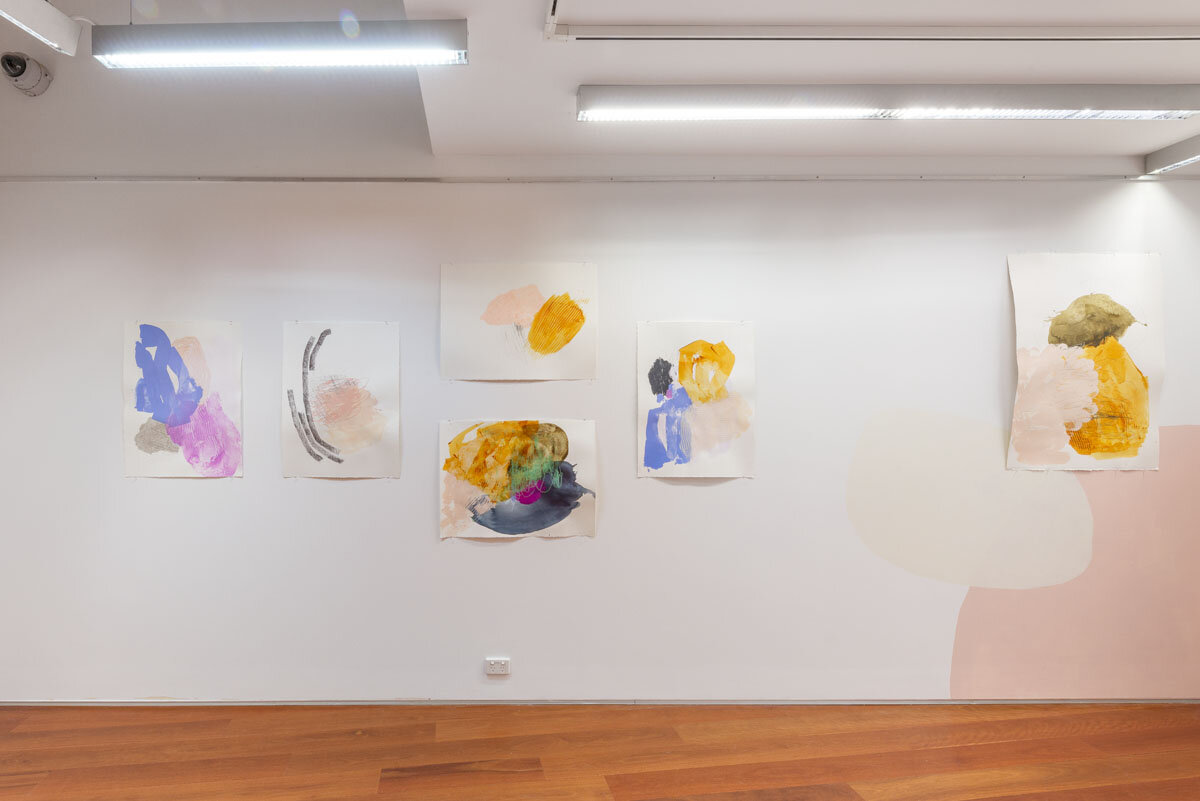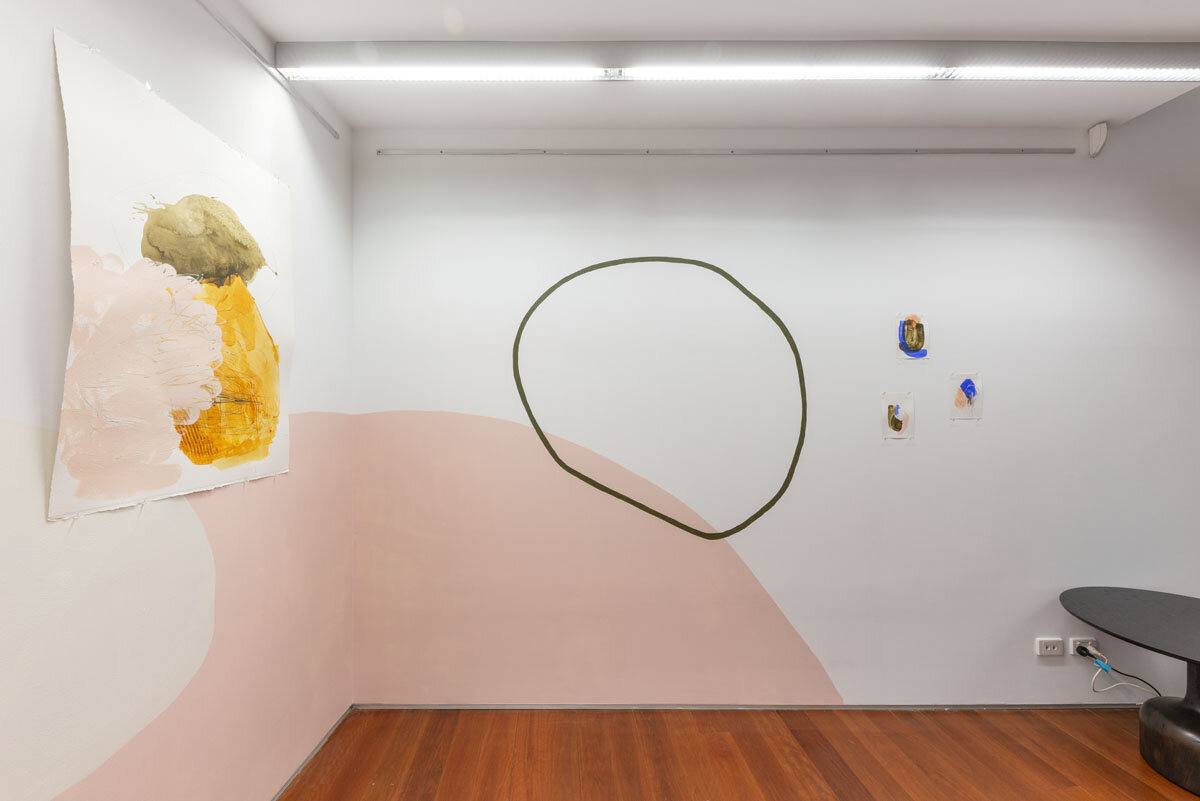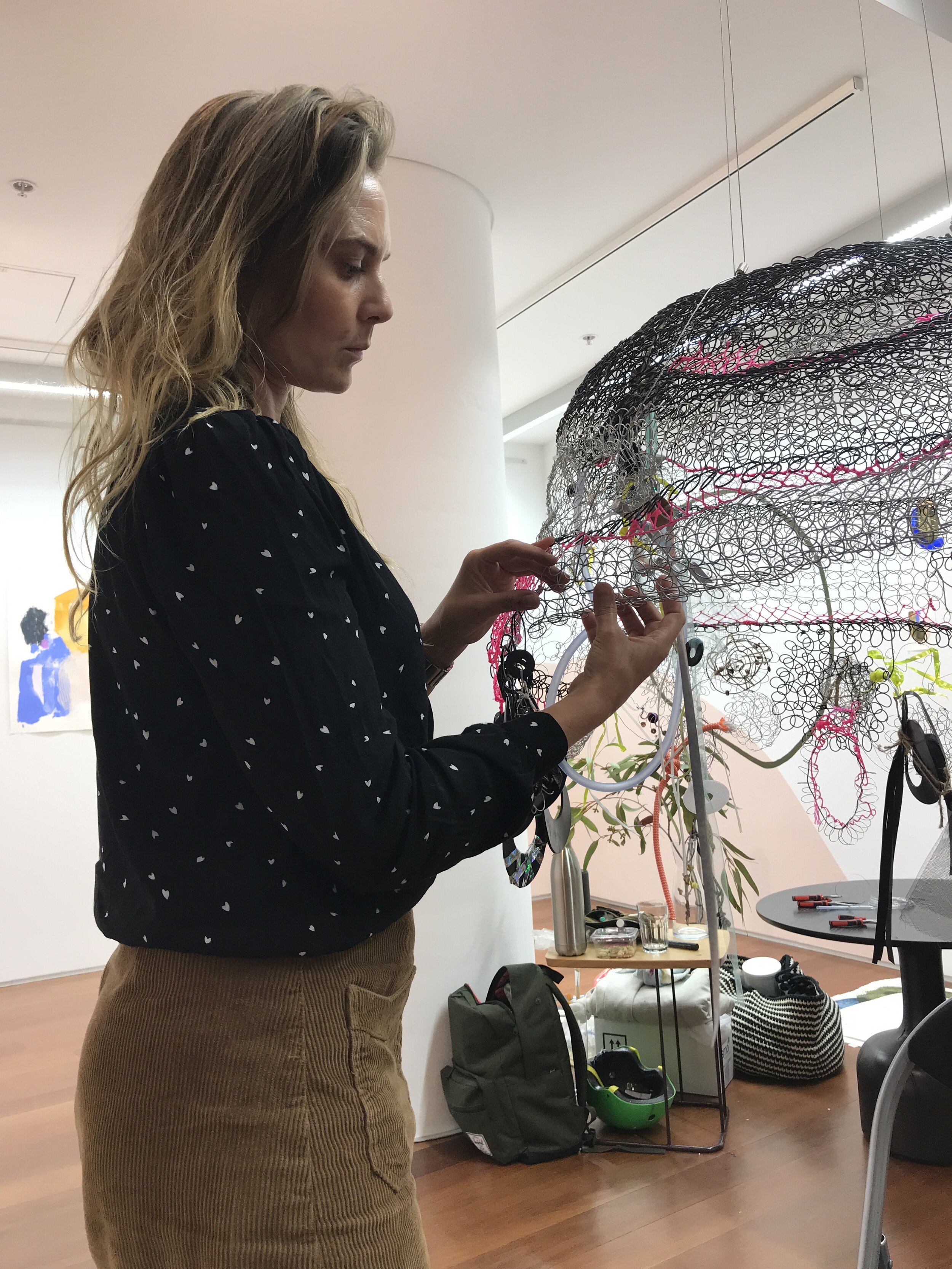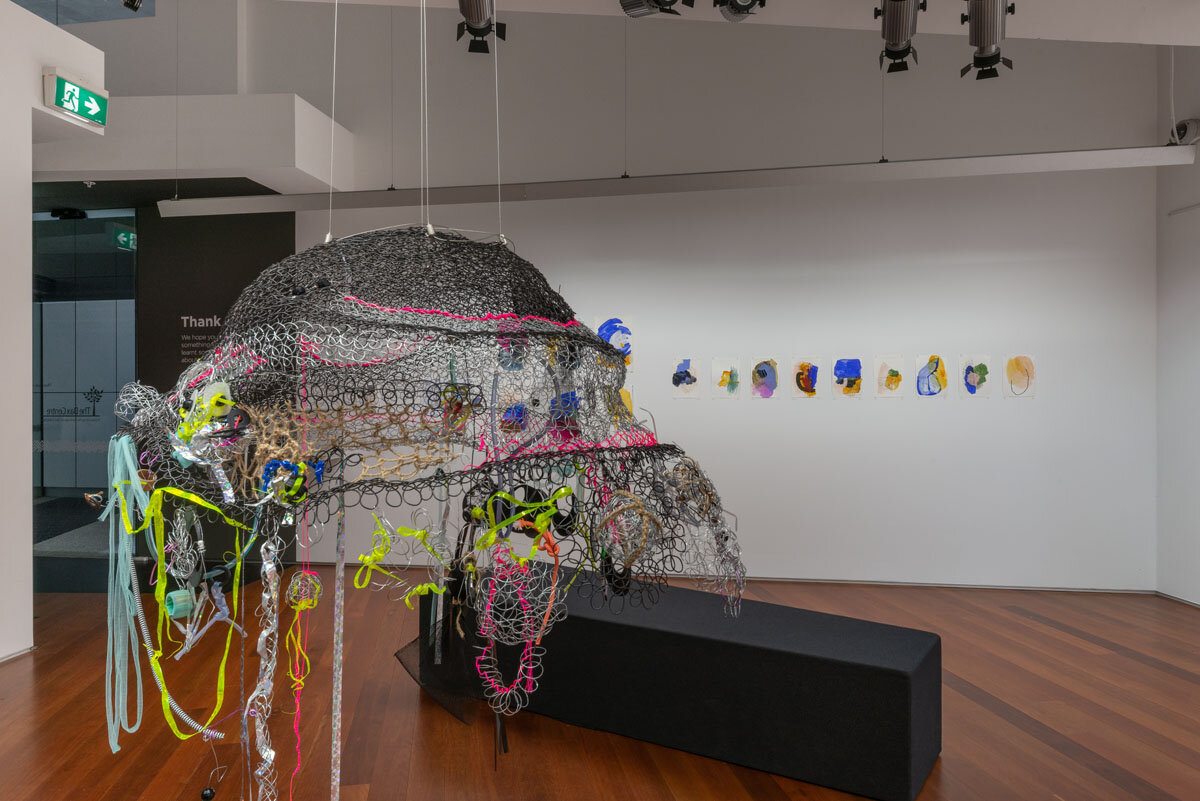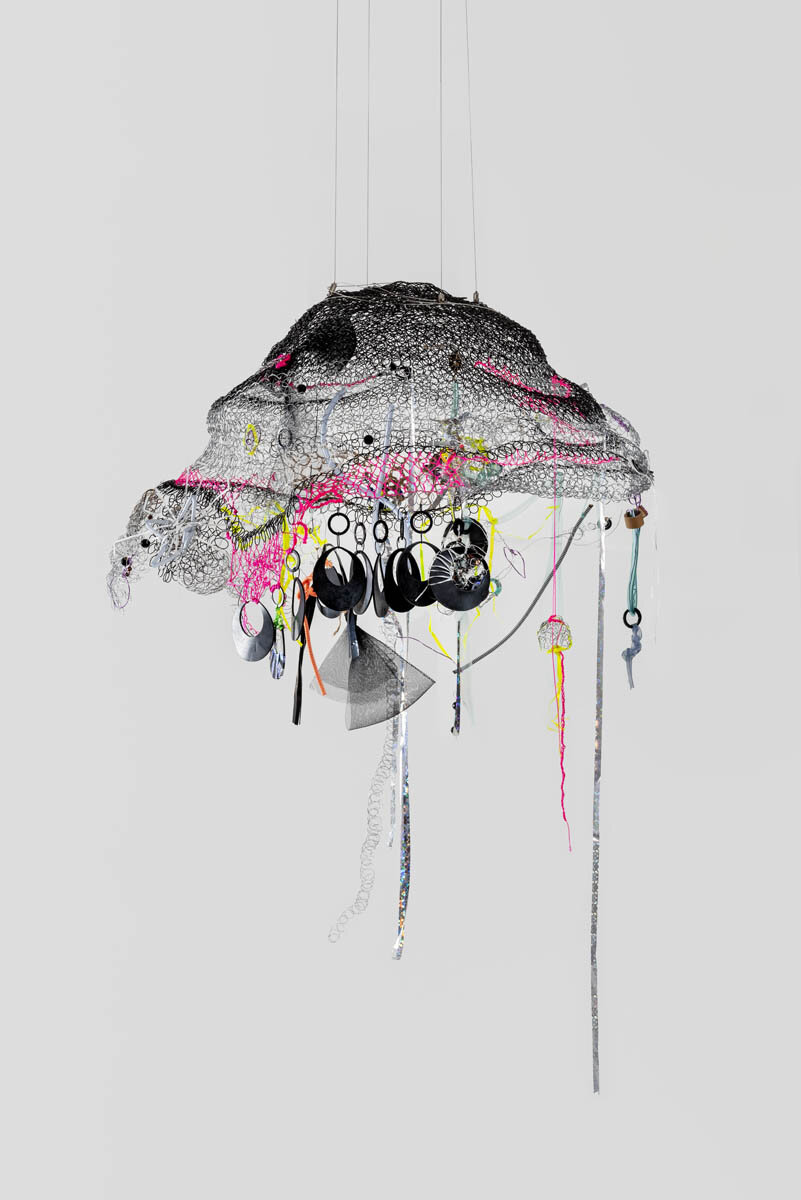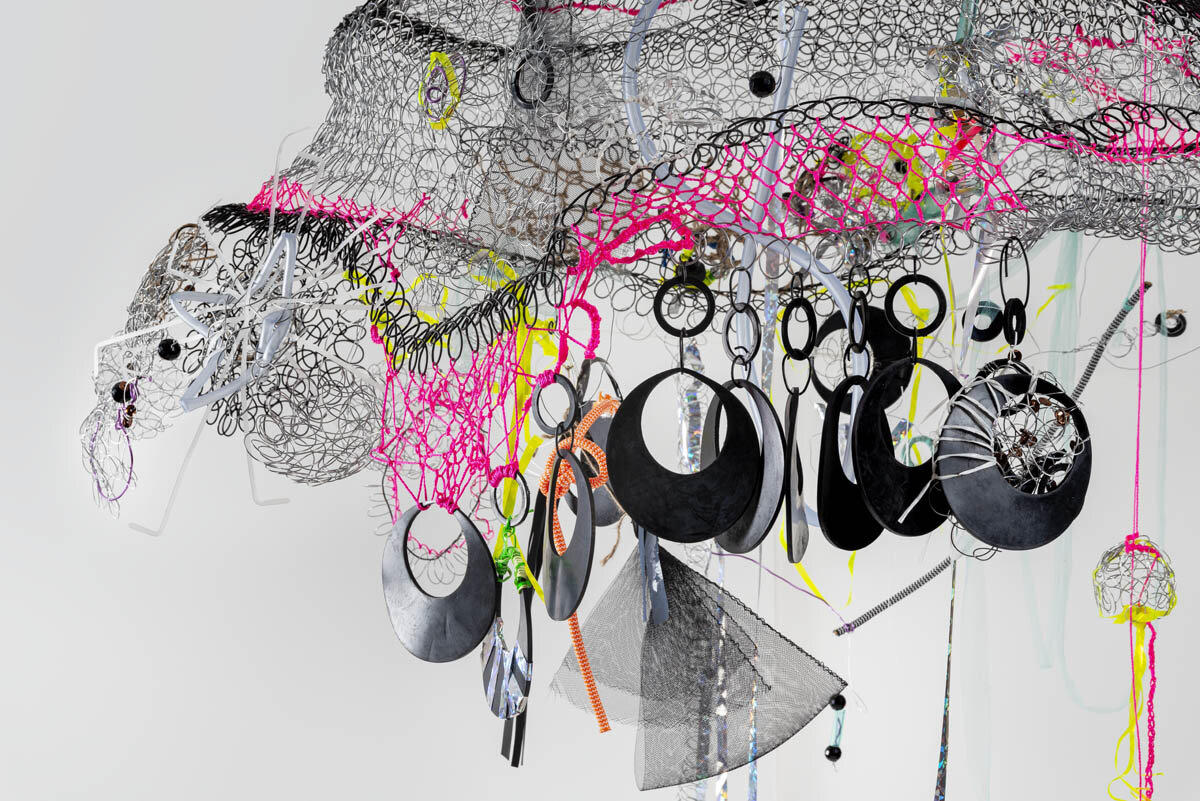Artist in residence at The Dax Centre
written April 9, 2020
In February this year I was invited to be the first artists residency at The Dax centre in Melbourne, the residency would run for five weeks as part of a larger exhibition titled STIGMA: dismantled, revealed, an exhibition which showcased six other contemporary artists exploring the pervasiveness of stigma and self-stigma in relation to mental health.
The Dax Centre is a leader in the use of art to raise awareness and reduce stigma in relation to mental health. They work to engage, inform and encourage community connections and conversations about mental health through the arts. As an artist with training as a therapeutic arts practitioner, I thought this was a wonderful and unique opportunity to explore what I believe is the inherent connection between the arts, the making and sharing of it, and our well being.
My plan to explore the theme came in two distinct forms, the first being a community built art project (which you can read all about over HERE) and the second was a more focused exploration of my own experience through works on paper, free writing sessions and mindfulness.
I arrived in the space with the plan to follow a routine, which would (I’d hoped) help me connect with my inner experience despite the shift to unfamiliar surroundings. I would spend some time cultivating my connection to self and environment through a mindfulness exercise before beginning to paint, once I had reached a point where my gestural explorations had been laid out, I’d switch modalities to free write for 10 minutes or so, fleshing out the manifestations of introspection in another modality. I found it strange to settle into a new space, I tried to cultivate the intimacy I was so used to having in my home studio, a private space which contained the transparent reflective and responsive exploration of introspective connection, a space where I was essentially invisible to the outside world and could work with a myopic focus on the exploration of my inner experience, comfortable in the cloak of anonymity.
Yet the gallery was not that space. Even though I had come to work at a time when the gallery was closed to public visitors, there was always a gentle tide of people that washed across the space; the other staff that worked in the gallery, the catering staff that would move through to set up for events and the steady noise and movement of the scientists who worked in the levels above me, their voices echoing down an open cavity that stretched the height of the building. I was part of a larger ecology, a gallery space, set inside a research facility that was part of one of Australia's largest universities. There were people and activity everywhere, a constant flurry of movement and exchange. I was not alone and was very visible.
My focus and view constantly oscillated between outward and inward awareness. I was not just functioning as a witness and participant to my subjective inner experience but also a participant and witness of the objective experiences of others in constant flow around me. The routine I had adopted to bring my focus introspectively felt limiting, I was frustrated with my futile efforts to shut down the external workings of my environment whilst actively existing and participating among it.
I have a participatory worldview, I believe that we experience the world and make sense of that experience in relation to others, but struggled to hold onto the nuance of my own experience in the space, the pace of the environment moving faster than I could attend to, it felt difficult to round out and continue one thread of feeling before another tugged at me. I felt stretch across the fullness of all that was available for experiencing and so the experience itself felt thin and only touched the surface of possibilities. I wanted to explore the ecology of the environment with fresh attention, open myself up to an embodied investigation that would manifest itself in a visual response, but I felt incapable of being permeable in the space, limiting the visceral dimensions of my experience.
I had to step out, not to step away, but to regain my own step, find the ground, reorientate my perspective and be able to step back in more consciously.
I found a wonderful garden a short walk from the gallery, called the System Garden. The garden is a horticultural exploration of plant diversity, a series of garden beds and sections where plants have been sown in groups according to their families/subclasses the emphasis on plant evolution and relationships. Amongst the other microclimates is an Australian Rainforest section with a magnificent sprawling rock fig and all manner of ferns, lichens and moss nestle under its canopy, each plant maintaining its identity whilst flourishing and responding to the mix of its environment. This was what I wanted; this is what I needed to be able to do. Not dissolve myself into the membrane of a larger system, but instead to establish roots and participate symbiotically with the environment.
So on Monday’s, when the gallery was closed I would ferry my materials across from the gallery, setting up a temporary studio, the magnificent fig would lend me its canopy as a shield against the searing heat of this year's summer and together we would paint for hours. The foliage and the sun interacting to form beautiful shadowed outlines, the movement of the plants and the smell of the damp earth, the clicks and rustle of birds in the undergrowth contributing to the broadness of my experience. I found a way to flow in this environment, collaborating with the space, letting go of any effort to focus on one thing or another and instead cultivated a type of porosity that allowed me to deeply engage with my process, my environment and myself at the same time. It was less about the concept, more about being open to a broader perception.
This shift in awareness brought attention to the perceptual anomaly that galleries, as a space and place bring. They way they are predetermined as transitory spaces, places of impermanence whereas a visitor you are perceptively aware of the expectations of the space acting upon you, the quiet reverence, your role as a witness to the presentation of a static environment. There are intangible internal and external barriers, bred from a cultural expectation that subtly dissuade participation, dissuade you from making a sound or too much movement, your presence in the space reduced to a somewhat passive witness, your internal resonances contained.
Yet the intentions of The Dax centre and gallery felt much more liminal. Their desire was to hold a space for people to connect, engage and communicate, to ask visitors to move beyond witnessing to engage, participate. I could see that my limitations to working in the space were a response to the more traditional expectations of a gallery space and that I needed to adapt, rather than persisting with an adjunctive mindset, trying to layer my current process over a new environment, I needed to find a way to hold myself, suspend myself, to let myself exist in this liminal space, to respond and embrace the reciprocal influence of the environment and its inhabitants.
“ If you change, the countenance of the world changes.”
– Carl Jung
So I moved back in, making marks directly on the walls in the space, taking responsibility for my own experience and readjusting my perceptive limits to bring a multisensory coherence that sat adaptively in this labile space. I painted a large mural across the corner of the room and I removed the temporary tape that fixed my work to the wall, curating a series to sit in and around the mural, affixing them with pins.
I landed in the space and the space landed in me.
Location
The Dax Centre
30 Royal Parade
Kenneth Myer Building, University of Melbourne
Parkville VIC 3010
Contact details
03 9035 6258
info@daxcentre.org
https://www.daxcentre.org/
Dates and times
15/02/2019 to 07/06/2019

